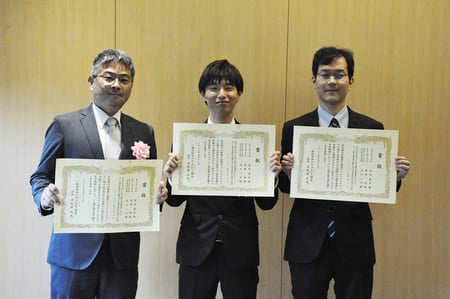Share this
On 18th May 2023, Naohiko Saeki (M2), Project appointed researcher Ryo Kurihara, Professor Ippei Maruyama, Department of Architecture, recieved Japan Cement Association Best Paper Award.

Japan Cement Association Best Paper Award
Japan Cement Association Best Paper Award was established in 1972 to contribute to cement and concrete's academic and technical progress and development. The Paper Prizes are awarded to papers published in the Cement and Concrete Journal over the past two years and selected by the Selection Committee for their high academic and practical value and for their original and advanced research. The Paper Award Ceremony is held at the Annual Cement Technology Conference in Tokyo around May every year, where the Screening Committee Chairman introduces the reasons for the selection, and JCA presents the award certificates and supplementary prizes to the winners, followed by a commemorative lecture by the winners.
About awarded research
Concrete production currently emits a large amount of CO2, making carbon neutrality an urgent issue in the concrete sector. The interaction between concrete and CO2 has been regarded as a deteriorating phenomenon that leads to internal corrosion of steel bars as a consequence of neutralisation or carbonation. In recent years, much research has been conducted on the positive aspects of CO2 fixation. This study aims to elucidate the carbonation process in natural environments and discusses the carbonation phenomenon of cement paste under different humidity conditions and the reaction rate of hydrates formed by the reaction of cement with water, using infrared spectroscopy to examine the change over time.
Your impression & future plan
To calculate the amount of CO2 fixation in hardened cement, it is necessary to clarify further the microstructure and mass transfer in the system as well as the chemical reaction rates that were examined in this study. In addition, we would like to investigate the reaction system when admixtures such as blast furnace slag and fly ash are included as they change the reaction system. There is still much to be elucidated so that we will continue our research.
These Related Stories


